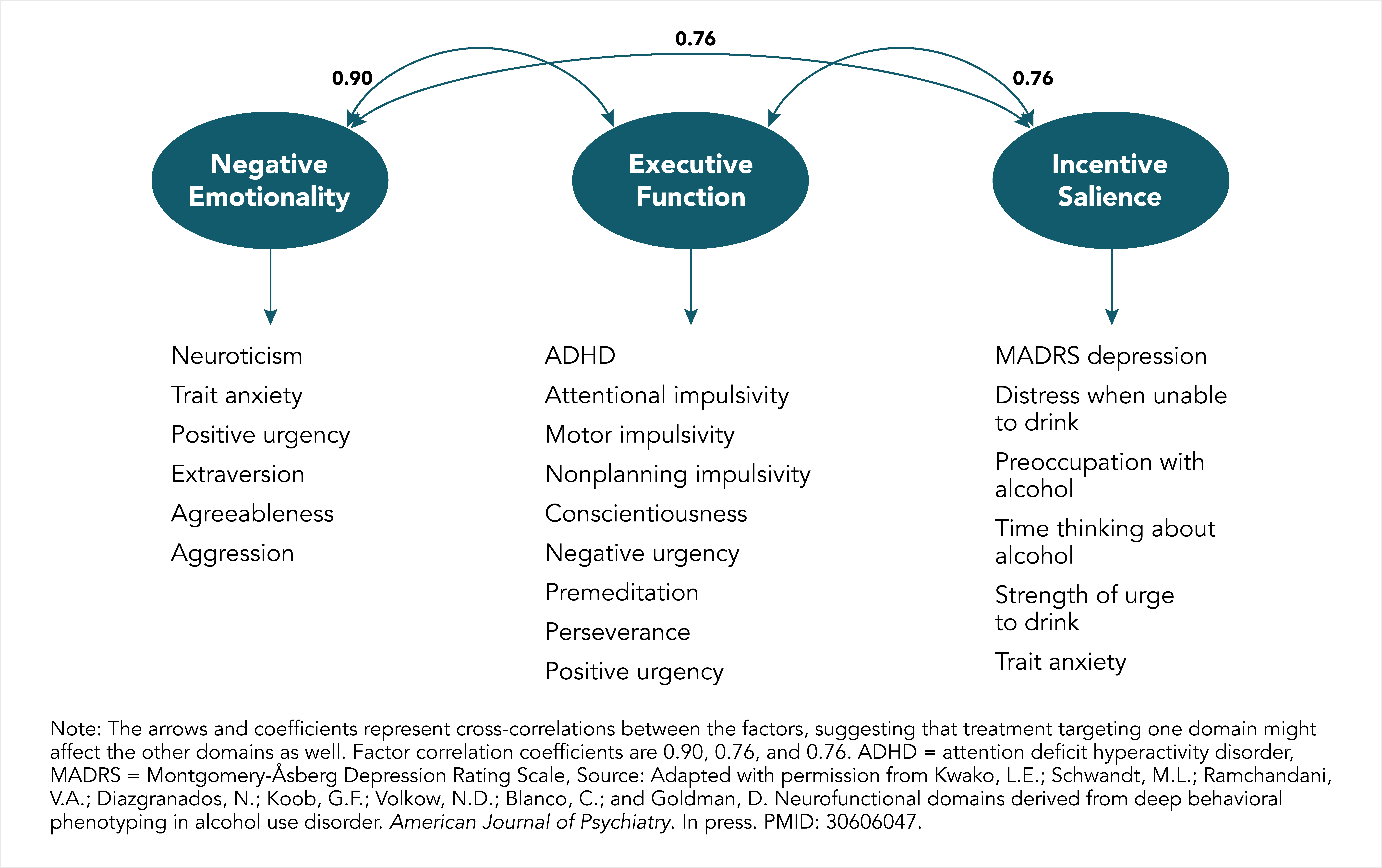Alcohol use disorder (AUD) is a common, heterogeneous disorder, and this heterogeneity drives the need for precision treatment. In a recent study, investigators at the National Institute on Alcohol Abuse and Alcoholism (NIAAA) led by Laura E. Kwako, Ph.D., a Clinical Psychologist in NIAAA’s Office of the Clinical Director, tested the hypothesis that neurofunctional domains could be established from neuropsychological studies of AUD subjects, which ultimately could lead to more effective individualized treatments. From a diverse clinical sample of individuals representing the spectrum of alcohol use and misuse, including patients seeking treatment for AUD, Dr. Kwako and her colleagues collected measures of addiction, personality, cognition, behavior, and exposure to early-life stress. Through factor analysis, they obtained factors corresponding to three functional processes considered relevant to addiction: (1) incentive salience: giving increased motivational value to an object or event paired with alcohol, (2) negative emotionality: increased anxiety, negative mood, irritability, or other unpleasant feelings, and (3) executive functioning: how individuals organize behavior toward future goals and make choices. These three domains compose the main focus of the Addictions Neuroclinical Assessment (ANA)–derived social psychology and the neurobiology of addiction. Although the researchers note that more work is required to validate and standardize these domains for alcohol and other drugs, they are optimistic about the ANA’s potential for providing a heuristic framework for improved diagnosis, prevention, and treatment. NIAAA researchers are currently collecting additional measures explicitly chosen to measure ANA domains.
“I think the ANA has the potential to fundamentally alter the way we think about alcohol and drug addiction and treatment,” says Dr. Kwako. “Using these measures could really help us better understand the heterogeneity of AUD and more effectively tailor treatments to an individual.”
NIAAA Director George F. Koob, Ph.D., a coauthor of the study, adds, “The ANA provides a heuristic framework for understanding the great advances that have been made and continue to be made in the neuroscience of addiction.”
Reference:
Kwako, L.E.; Schwandt, M.L.; Ramchandani, V.A.; Diazgranados, N.; Koob, G.F.; Volkow, N.D.; Blanco, C.; and Goldman, D. Neurofunctional domains derived from deep behavioral phenotyping in alcohol use disorder. American Journal of Psychiatry. In press. PMID: 30606047
